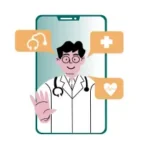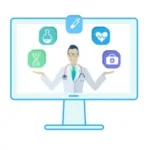
Rolling out Epic Electronic Health Record (EHR) software is one of the most impactful changes a healthcare organization can make. However, the real test of success comes during the Epic Go-Live phase, where preparation meets execution. A smooth and well-orchestrated Go-Live ensures efficient workflows, accurate data transfer, and confident adoption among clinicians—while a poorly managed launch can disrupt patient care and daily operations.
That’s why we’ve created A Step-by-Step Guide to Successful Epic Go-Live Support—to help healthcare organizations understand how to plan, execute, and optimize their Epic implementation with precision and confidence. At ClinDCast, we specialize in Epic Go-Live Support, offering experienced consultants, at-the-elbow (ATE) guidance, and expert command center coordination. Our proven methodology ensures hospitals and health systems transition seamlessly with minimal downtime and maximum user satisfaction.
1. Pre-Go-Live Planning: Building the Right Foundation
A successful Epic Go-Live begins long before launch day. Proper preparation, active stakeholder engagement, and detailed readiness testing help your organization embrace the change with confidence.
Key activities include:
(a) Epic Readiness Assessment: Evaluate hardware, software, devices, and integrations. Verify data migration accuracy and confirm secure connectivity across systems.
(b) Stakeholder Alignment: Involve clinical, IT, and operational leaders early on. Define clear responsibilities, escalation paths, and communication plans.
(c) Epic Super-User Program: Train departmental super-users who can deliver frontline support during Go-Live, minimizing dependence on IT teams.
(d) Epic Go-Live Playbook: Develop a comprehensive guide outlining workflows, downtime procedures, escalation steps, and communication strategies.
ClinDCast Advantage: Our consultants conduct mock Go-Lives and readiness simulations to identify risks early, ensuring a stable, well-prepared launch.
2. Command Center Setup: Managing Go-Live Operations Efficiently
The Epic Command Center serves as the central hub during Go-Live, managing real-time issues, tracking performance, and maintaining visibility across departments.
Essential Command Center practices:
(a) Centralized Issue Tracking: Utilize Epic’s incident management tools to log, prioritize, and resolve support tickets efficiently.
(b) Specialized Support Teams: Assign focused teams for key functions like clinical documentation, billing, scheduling, and pharmacy operations to ensure timely resolutions.
(c) Performance Dashboards: Track issue trends, response times, and end-user satisfaction metrics in real time.
(d) 24/7 Coordination: Maintain around-the-clock communication between onsite and remote support teams.
ClinDCast Expertise: Our Command Center model leverages tiered escalation and data-driven analytics, helping healthcare organizations resolve 90% of issues within the same day.
3. At-the-Elbow (ATE) Support: Empowering Clinical End Users
Frontline At-the-Elbow (ATE) support is essential during the initial weeks of Go-Live, providing real-time help to users navigating Epic confidently.
Key components of ATE support:
(a) Comprehensive Floor Coverage: Deploy trained Epic support professionals across inpatient, outpatient, and administrative settings.
(b) Workflow Coaching: Guide clinicians through documentation, order entry, and discharge workflows while promoting best practices.
(c) Instant Escalation Protocols: Direct technical or workflow-related challenges to the Command Center immediately.
(d) User Confidence & Feedback: Gather feedback continuously to fine-tune support and enhance user satisfaction.
ClinDCast Difference: Our Epic-certified ATE specialists combine deep clinical expertise with strong system knowledge, helping users adapt quickly and maintain safe, efficient care delivery.
4. Post-Go-Live Stabilization and Optimization
Once Epic is live, stabilization becomes critical for maintaining performance consistency and driving continuous improvements.
Critical post-Go-Live activities:
(a) System Monitoring: Review ticket trends, performance data, and user satisfaction scores to identify recurring pain points.
(b) Knowledge Transition: Transfer operational responsibilities to internal IT teams while ensuring continued access to external experts when needed.
(c) Epic Optimization Workshops: Fine-tune workflows, automate repetitive steps, and streamline data entry to enhance efficiency.
ClinDCast Commitment: Our partnership extends beyond Go-Live. We continue to deliver optimization and enhancement services, enabling clients to achieve maximum ROI from their Epic investment.
Conclusion: Partner with ClinDCast for a Seamless Epic Go-Live
An Epic Go-Live is more than a technology rollout—it’s a major organizational transformation. Its success depends on strong planning, efficient coordination, and expert guidance.
With ClinDCast’s proven Epic Go-Live methodology, healthcare organizations gain the ideal blend of readiness, ATE support, command center expertise, and post-Go-Live optimization to ensure a smooth transition that enhances patient outcomes and operational excellence.























